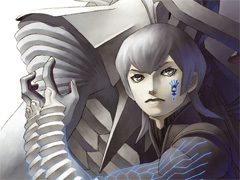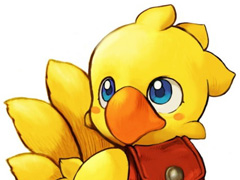When I saw the “Game of the Decade?” thread on the Cheap Ass Gamer forums, I took the title more into consideration than the post itself. The “best” game of the ’00s? Even now, I’m still not sure about that. However, the game that best defines the past decade? When I posted my reply, it was based largely on a gut feeling, and one I still feel pretty good about. So anyway, here is the answer I gave, and now, I will also tell you why this game fits the bill.
 Game of the Decade:
Game of the Decade:
We ♥ Katamari (PS2, 2006)
Thought I’d say something grander and/or more obvious, huh? Nope. My pick for GotD is the sequel to the idiosyncratic Katamari Damacy which, on the surface, merely looks like more of the same. However, not only is it a bigger and better game than its predecessor, but it also serves as a compact time capsule of much of the past decade in gaming. Here is why We ♥ Katamari is important in these terms:
– It’s the quintessential auteur game in a decade full of them – …and few of the newer video game auteurs have been as genuinely creative as Keita Takahashi. The designer of the original Katamari, Takahashi wasn’t originally all that enthused about a sequel, but got on board for one all the same. What resulted wasn’t just a great game, but also one that was strikingly personal in a way that was and is rare for the medium: the plot this time around has to do with the King of All Cosmos (i.e., Takahashi) dealing with his newfound popularity (Katamari Damacy‘s global success) and trying to please his fans (the sequel’s new goals). The Japanese title—Minna Daisuki Katamari Damashii, literally “Everybody Loves Katamari Damacy”—reflects this theme much more directly than the Western one.
After We ♥ Katamari, Takahashi would not touch the series again, nor would he create another video game until 2009’s Noby Noby Boy. I haven’t played this new game, but I hear it’s interesting, and wonder how much of Takahashi’s sensibility shines through in it.
– It was one of the brightest spots in a period of turmoil for Japanese games – …to say the least. When a famed producer from a major Japanese publisher declares that their home country is “done” at the 2009 Tokyo Game Show, then there’s trouble. During the past decade, Japanese genre staples like shmups and fighting games continued their steady decline in the West, the JRPG began one of its own, Sega got out of the hardware business, several companies merged with each other, and certain Western PC genres (most notably first-person shooters) exploded in popularity on consoles. Oddly enough, while all this was going on, it tended to be the more “Japanese” Japanese games that really made an impression on people. ICO was one such title, as was Disgaea: Hour of Darkness, Phoenix Wright: Ace Attorney, and, yes, Katamari Damacy. While the latter game’s US sales defied Namco’s expectations, We ♥ Katamari proved that it wasn’t just its predecessor’s lower MSRP that led people to pick it up. The Japanese quirks were certainly a selling point for a large chunk of the audience, but for others, it might’ve been the positive buzz or the weird gameplay. Or the simple fact that the first game was genuinely good and fun, and the sequel was said to be great as well; when it comes down to it, that’s what it’s usually about, right?
– It’s the best game in one of the few new genres to emerge this past decade – …and there weren’t many of them. I’ve talked about garden games before—that nebulous new genre occupied not only by the likes of the Katamari series, but Elebits and de Blob, two others that take on the same basic concept of timed mass cultivation. We ♥ Katamari is the crème de la crème of the bunch in every way: tight controls, uniform graphics, witty writing, challenging-but-not-frustrating play, fresh levels, and a soundtrack that easily ranks among the best of the decade—for any game. In fact, the only quibble I have with it are the load times, but these are made a non-issue by the King of All Cosmos’ amusing chatter.
– It had co-op before it was cool – …and so did some other games of the time, but I just thought I’d throw that in there for shits and giggles. Hell, if the King of All Cosmos was writing this post, you know he’d do the same.
So, there you have it, my Game of the Decade. It might seem a bit underwhelming right now, but I’m sure a number of years down the road, We ♥ Katamari will be looked back upon with the fondness and reverence that it is deserved. It may not be the most important game of the decade (Halo? World of WarCraft? Brain Age? Second Life? There’s a lot to choose from here), it may not have been the most innovative (not games, but Steam and the Nintendo DS get my votes here), it may not have sold the most copies or inspired the most bits of fanart or been what people have played the most of these past ten years, but for me, it is emblematic of the tumultuous, chaotic, but still fun katamari that was gaming in the ’00s. Personally, I didn’t love everything about said decade, but I will always love We ♥ Katamari.

